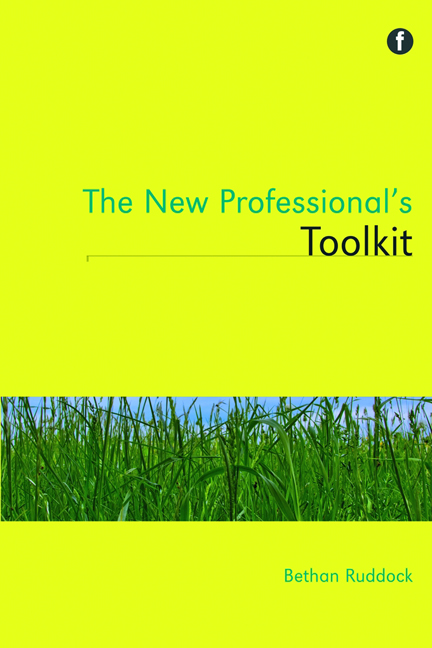Book contents
- Frontmatter
- Dedication
- Contents
- Preface
- Acknowledgements
- Glossary
- Introduction
- 1 Project management
- 2 Teaching, training and communicating
- 3 Meeting your users' needs and measuring success
- 4 Marketing your service and engaging stakeholders
- 5 Using technologies
- 6 Getting and staying online
- 7 Generating funding and doing more with less
- 8 Managing money, budgets and negotiating
- 9 Information ethics and copyright
- 10 Upskilling and professional development
- 11 Networking and promoting yourself
- 12 Professional involvement and career development
- Conclusion
- Appendix: Budgeting example spreadsheet
- Index
3 - Meeting your users' needs and measuring success
Published online by Cambridge University Press: 08 June 2018
- Frontmatter
- Dedication
- Contents
- Preface
- Acknowledgements
- Glossary
- Introduction
- 1 Project management
- 2 Teaching, training and communicating
- 3 Meeting your users' needs and measuring success
- 4 Marketing your service and engaging stakeholders
- 5 Using technologies
- 6 Getting and staying online
- 7 Generating funding and doing more with less
- 8 Managing money, budgets and negotiating
- 9 Information ethics and copyright
- 10 Upskilling and professional development
- 11 Networking and promoting yourself
- 12 Professional involvement and career development
- Conclusion
- Appendix: Budgeting example spreadsheet
- Index
Summary
Introduction
Meeting users’ needs has always been central to the library and information profession. It is no coincidence that user needs are at the heart of one of the LIS community's unofficial mottoes, Ranganathan's (1931) five laws of library science:
1 Books are for use.
2 Every reader his book.
3 Every book its reader.
4 Save the time of the reader.
5 The library is a growing organism.
They have stayed at the heart of every reimagining and reinterpretation since. ‘Books’ may have been replaced with ‘media’ or ‘information’ and ‘reader’ with ‘user’, but the key principles of connecting the user with the right information, in the right way, and at the right time have remained.
While the format of information has definitely changed, the principles behind its provision haven't. You can think of good information provision as being like providing a well balanced meal. It must look appetising (be presentable), be delivered when the user is hungry (be timely), taste good (meet users’ wants) and be nutritionally balanced (meet users’ needs).
One of the big challenges for information professionals is to distinguish between users’ wants and users’ needs. We all know that half of the art of a good reference interview is to get past what users think they want to what they actually need. Unfortunately, not all interactions and services come with a chance to talk in detail to your users about their wants and needs. So how do you find out whether you are providing the services your users really need?
One of the first things to do is to find out who your users are. How easily you can do this will depend on your organization – a firm's internal law library will probably have a much better defined user group than a public library, for instance. But no matter how well you think you know your users, it is always worth an occasional stakeholder scan. You might find users and non-users in unexpected places (see Chapter 4 for more about working with stakeholders).
To communicate effectively with your users you need to understand them, their culture and their vocabulary. Understand the words they use and how they use them – you might already be doing something they say they want; you are just not telling them about it in the right way.
- Type
- Chapter
- Information
- The New Professional's Toolkit , pp. 37 - 54Publisher: FacetPrint publication year: 2012



